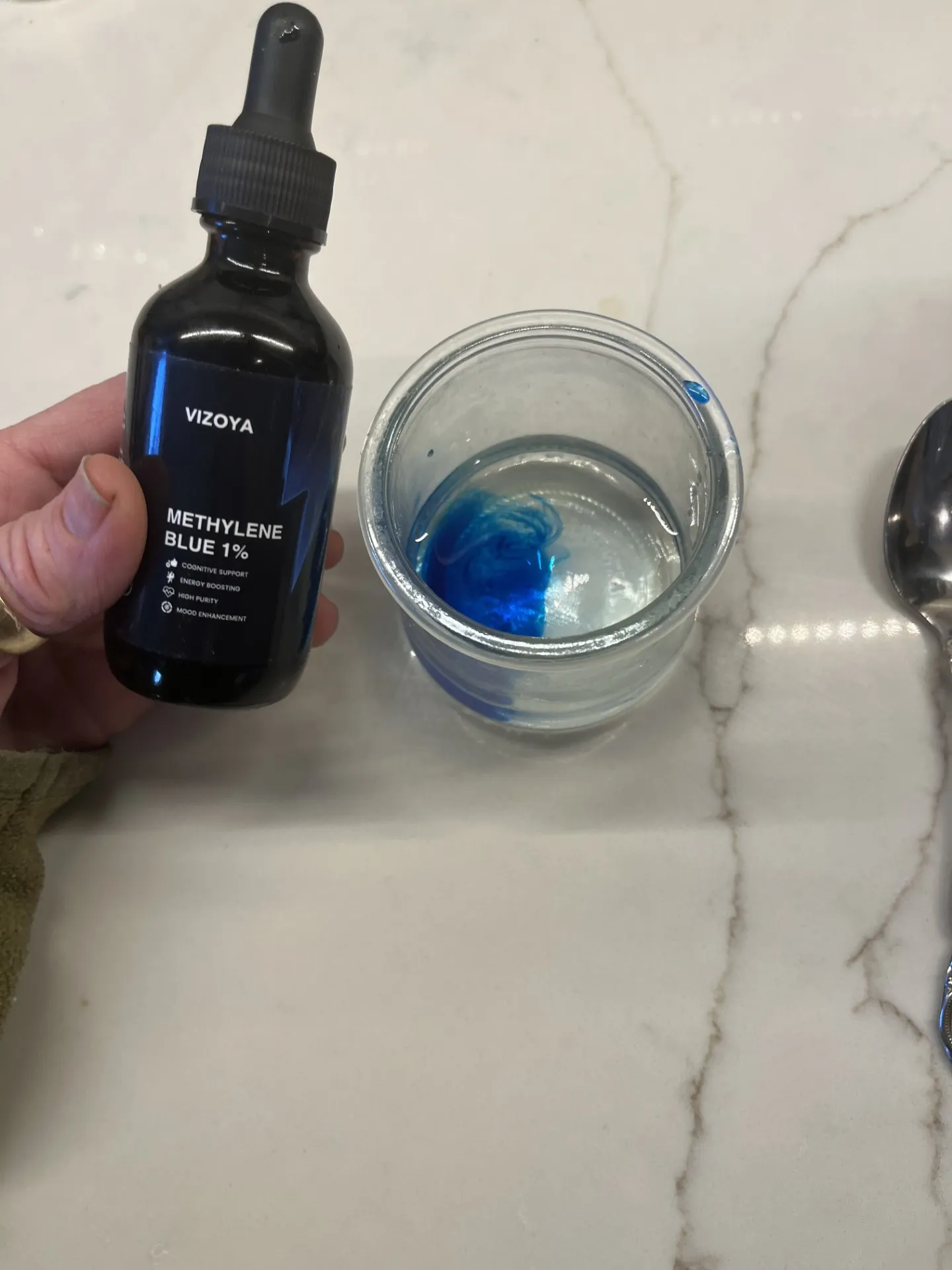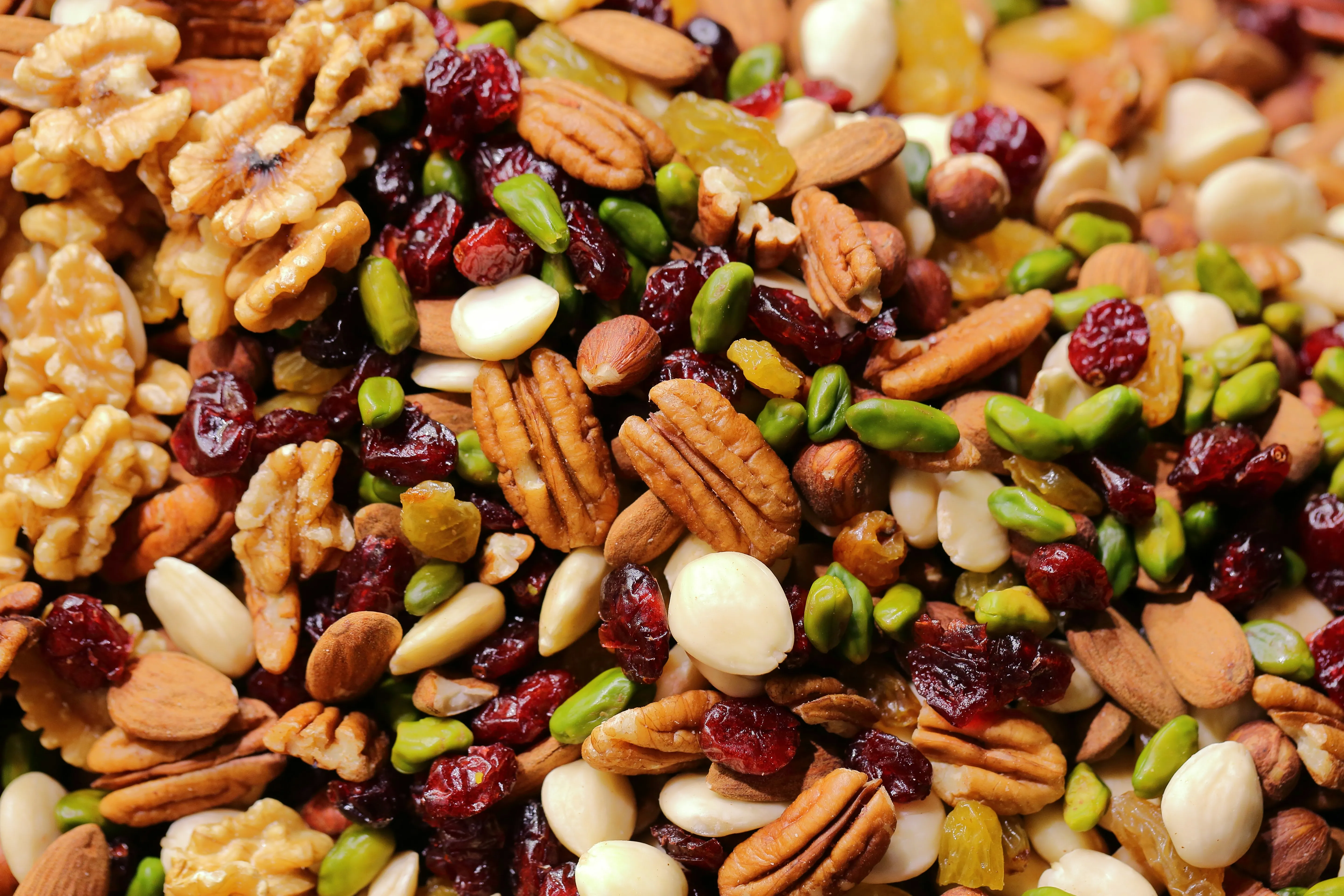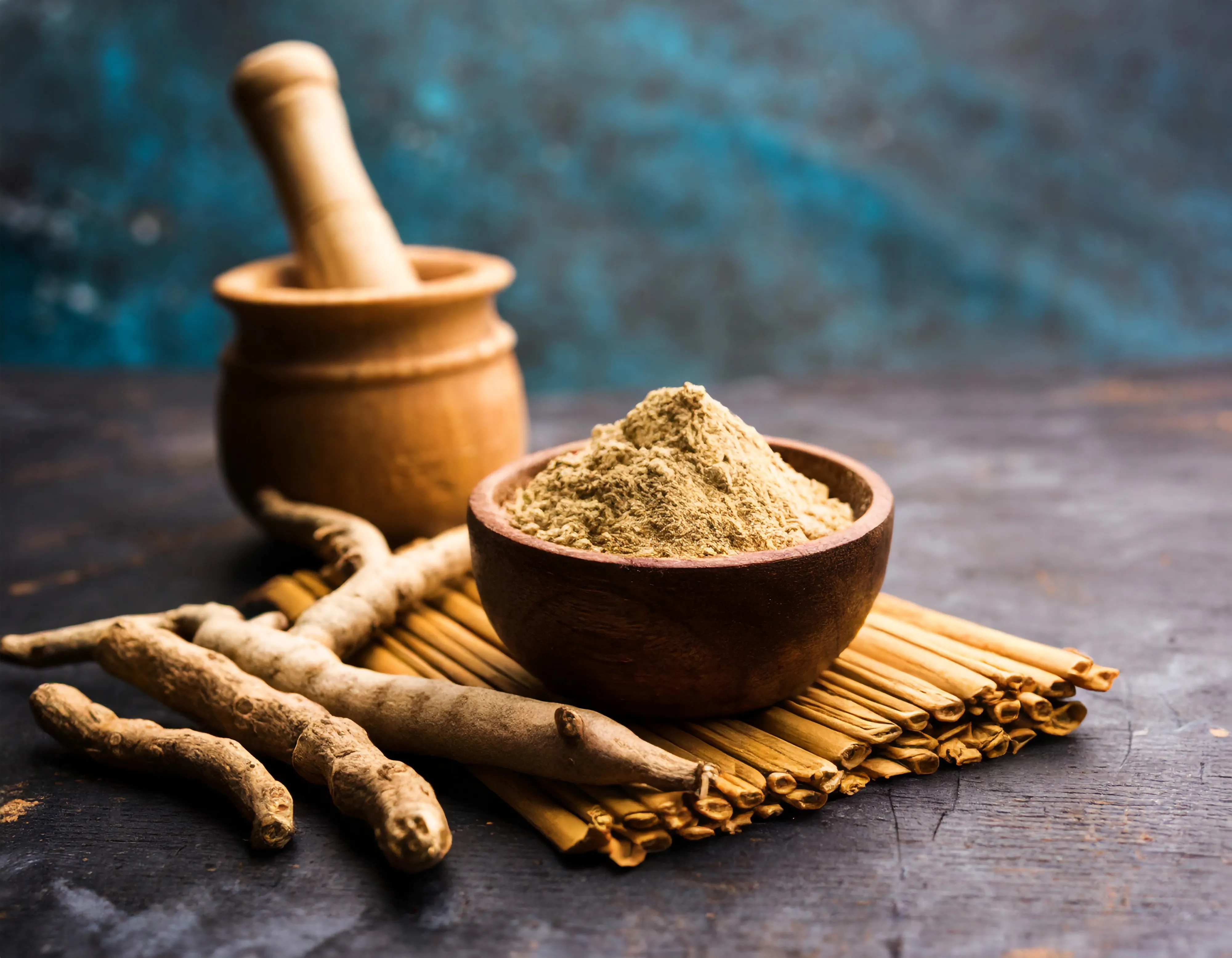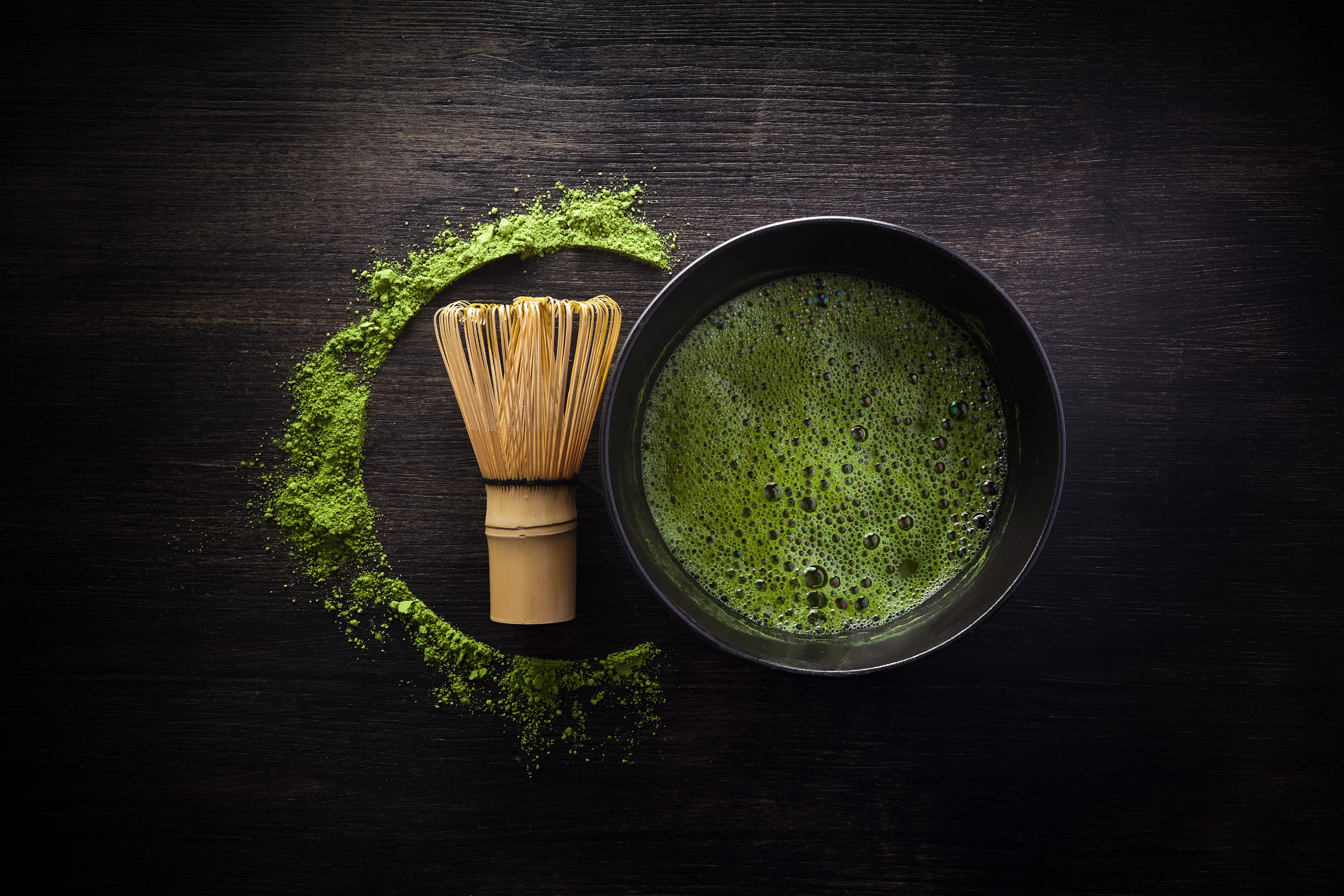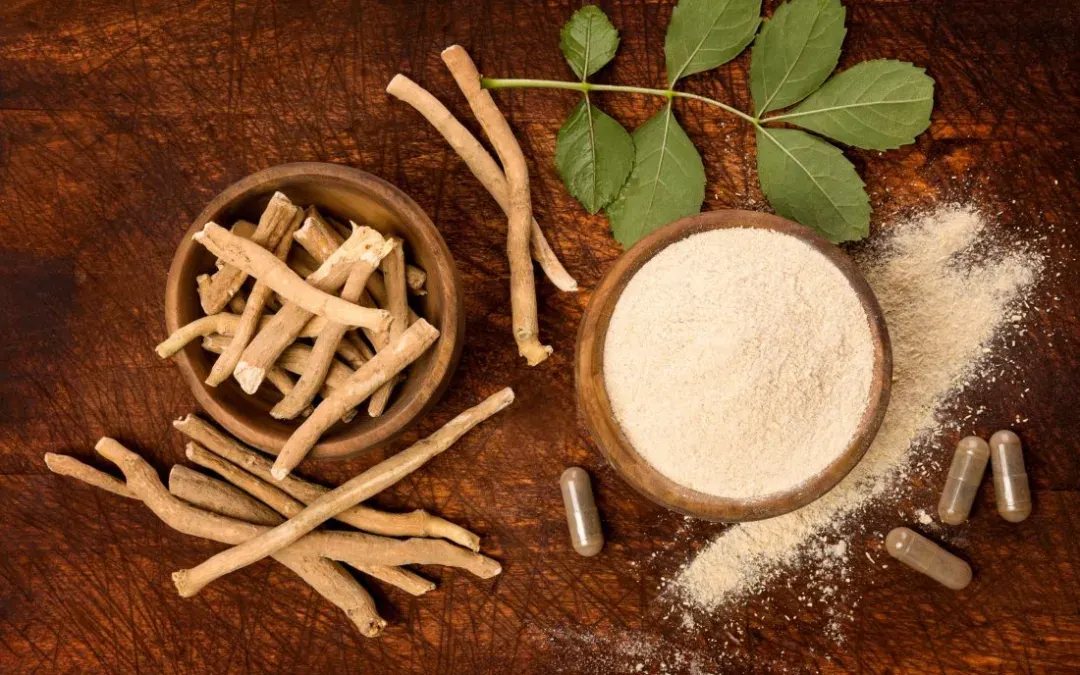Soursop for Stunting Cancer Cell Growth a Natural Cancer Prevention Approach
Introduction
by Christina Blanchard-Horan, PhD
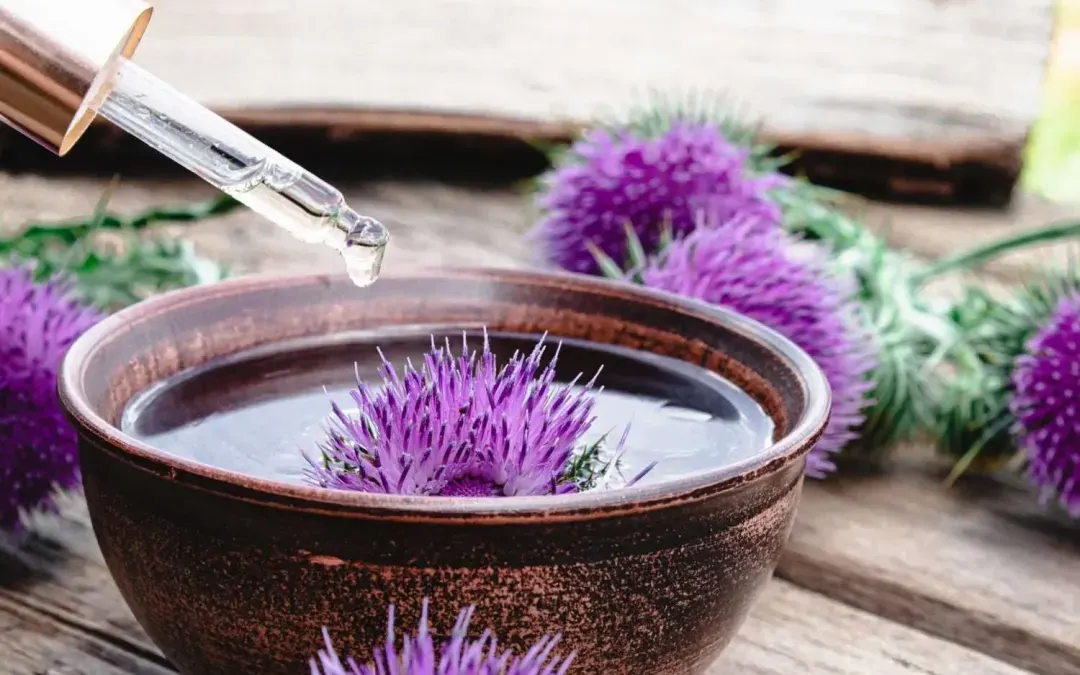
It seems like every other day a friend or relative is diagnosed with cancer. And for a long time medical doctors attributed cancer to an aging population. However, now doctors are seeing a higher number of young, under 50 year old’s with cancer.There are more than 100 types of cancer which can affect any part of the body and can be devastating both physically and mentally. I have a firm theory that this increase in cancer rates has to do with the food we eat and the environment we live in, which is covered in petroleum based plastics. To further exacerbate the situation, we consume cortisol when we eat stressed out animal products. We also know that the air and water are polluted. The cosmetics we use have endocrine blockers that cause breast cancer. The food we eat is also tainted with pesticides. In fact, FDA allows 10 times more pesticides per hectare than other countries. these chemicals are absorbed by our food. And, when we use herbicides to kill the weeds in our yard, weeds that we now know are actually good for our bodies (dandelions), we end up with Leukemia, like me. So what can we do? Since being diagnosed, I have done a tremendous amount of research. I’m sure you would too. All of my findings are from scientific journals, looing at lab results, clinical trial results, case studies, and other forms of science presented in the database at the National Institutes of Health (NIH). I am writing this blog post to share some of the preventive measures I have found to can take to prevent, slow, stop cancer from growing.
Discover related topics
- Targeted Therapy for Breast Cancer Pdf
- Herbal Drugs Used in Cancer Treatment Pdf
- Secondary Metabolites for Cancer
- Top 10 Cancers in Us
- Top 3 Cancers in the Us
This blog post is about finding ways for stunting Cancer Cell Growth with Natural Cancer Prevention Approaches. We will look at strategies that have been used for millennia and we in Western society have been fooled into believing that ancient medicine is “alternative” and it is “quakery” so that we are influenced into paying for and taking petroleum based pharmaceuticals.
Breast Cancer in Women
Most common among women is breast cancer. According to the National Breast Cancer Foundation, one in eight (1 in 8) women will be diagnosed with breast cancer.
Cancer develops when the DNA in breast cells undergoes alterations that interfere with the regulation of cell growth and division. These mutations sometimes cause cells to grow out of control, forming a tumor. In many cases, these mutated cells are unable to survive and are quickly eliminated by the body’s immune system. However, some mutated cells can evade detection, allowing them to multiply uncontrollably and spread throughout the breast tissue. This process leads to an abnormal mass of tissue known as a tumor, which can become malignant if left untreated. Although breast cancer can be caused by environmental factors such as radiation or hormone imbalances, it is usually due to a combination of genetic predispositions and lifestyle choices including diet, exercise, stress levels, smoking status, alcohol consumption, and family history.en
Prostate Cancer in Men
According to theCenters for Disease Control and Prevention, prostate cancer is the most common type of cancer among men in the United States. In 2020, it’s estimated that there will be 191,930 new cases of prostate cancer diagnosed, and 33,330 men will die from the disease. Prostate cancer is the second leading cause of death in American men, behind only lung cancer. African-American men are disproportionately affected by prostate cancer — they’re nearly 60% more likely to develop the disease than Caucasian men. The risk of developing prostate cancer increases steadily with age; most cases occur after age 65. It’s important for men to talk to their doctors about screening options so they can catch this potentially deadly disease as early as possible.
https://www.statista.com/statistics/268496/number-of-new-cancer-cases-among-men-in-the-us/
Endocrine Blockers aka Endocrine Disrupters
According to the NIH Website endocrine blockers are in many of our daily products.
Some of the most common endocrine disruptors include common every day items that are allowed into our food, water and breathing environment.
Bisphenol A (BPA) — used to make polycarbonate plastics and epoxy resins, which are found in many plastic products including food storage containers
Dioxins — produced as a byproduct in herbicide production and paper bleaching, they are also released into the environment during waste burning and wildfires
Phthalates — used to make plastics more flexible, they are also found in food packaging, cosmetics, children’s toys, and medical devices
Polybrominated diphenyl ethers (PBDE) — used to make flame retardants for household products such as furniture foam and carpets
Perfluoroalkyl and Polyfluoroalkyl Substances (PFAS) — used widely in industrial applications, such as firefighting foams and non-stick pan, paper, and textile coatings
Polychlorinated biphenyls (PCB) — used to make electrical equipment like transformers, and in hydraulic fluids, heat transfer fluids, lubricants, and plasticizers
Triclosan — may be found in some anti-microbial and personal care products, like liquid body wash
There is a myth that phytoestrogens, were endocrine blockers. Phytoestrogens are a naturally occurring substance in plants, which can produce hormone-like activity. Included in foods that produce phytoestrogens are soy products, like tofu or soy milk. However, research revealed that soy actually can help or hinder estrogen levels, depending upon the desired outcome. That demonstrates why it is important to understand what influences your hormones. It does not mean that the phytoestrogens are blockers.
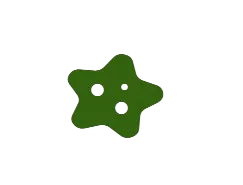
The Science of Cell Growth
The science around cancer cell growth is quite complex and research continues to provide new insights into how cancer cells develop and spread. According to a study published in the journal Nature, scientists have identified several key pathways that control the development of cancer cells in humans (Rasheed et al., 2020). The study found that malignant tumors are characterized by an altered molecular landscape, leading to uncontrolled proliferation and resistance to apoptosis. This suggests that targeting these pathways may be key for halting or reducing tumor growth.
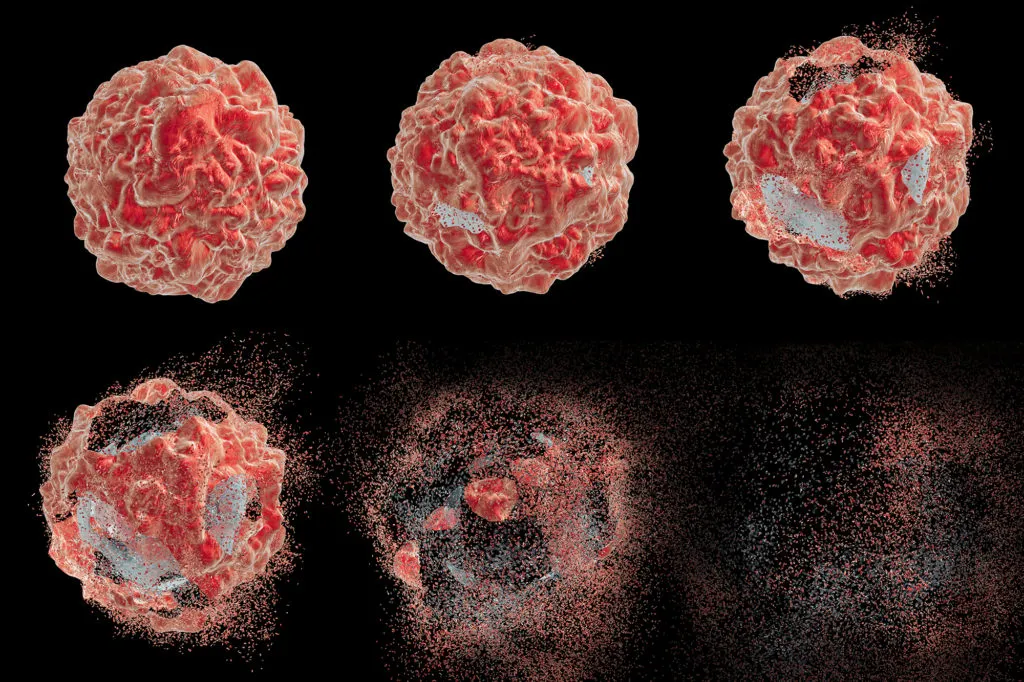
The molecular landscape of the body can be altered in a variety of ways, leading to malignant cell growth. The main causes of this are genetic mutations, and environmental factors such as toxins, such as those that were mentioned under endocrine blockers, from radiation, or from lifestyle choices like smoking or excessive alcohol consumption. Additionally, certain hormones and proteins can increase the risk for cancer development by stimulating cell division. For example, some hormones called oncogenes are known to activate cellular pathways that lead to uncontrolled cell proliferation and tumor formation. Other proteins may promote angiogenesis (the formation of new blood vessels), which is essential for supplying nutrients to growing tumors. Thus, an understanding of how these molecules interact with each other can provide valuable insight into the mechanisms behind cancer development. This can help us determine what we can do to stop tumor formation and growth.
Free Radicals
Free radicals are unstable molecules that can cause cellular damage and DNA mutations when present in abnormally high concentrations. They form from exposure to environmental toxins, such as radiation and ultraviolet light, but they are also produced naturally by the body through normal metabolic processes. Our bodies have a defense system in place to combat free radical damage with antioxidants, which help to neutralize their effects and protect our cells from potential harm. Unfortunately, when the endocrine system is disrupted or overwhelmed due to elevated levels of hormones, it can lead to an overproduction of free radicals and an increased risk of cancer.
Hüttemann and Flögel suggest that damage to cells caused by free radicals can be a contributing factor to the development of cancer and other health conditions (2008). They discuss the repercussions of abnormally high concentrations of free radicals in the body on cellular damage and DNA mutations, both of which can lead to cancer (Hüttemann & Flögel 2008). In addition, they cite environmental toxins such as ultraviolet light and radiation as sources of free radicals that can enter our bodies and overwhelm our natural defenses at a molecular level (Hüttemann & Flögel 2008).
The second article by Kowalczuk and Kaczmarek also emphasizes the role of free radical molecules in carcinogenesis (2010). They note that while these molecules are produced endogenously through normal metabolic processes, external sources like ionizing radiation can increase their concentrations to dangerous levels (Kowalczuk & Kaczmarek 2010). Fortunately, they conclude that defensive mechanisms such as antioxidants can help reduce their harmful effects when exposed to an influx of environmental toxins (Kowalczuk & Kaczmarek 2010).
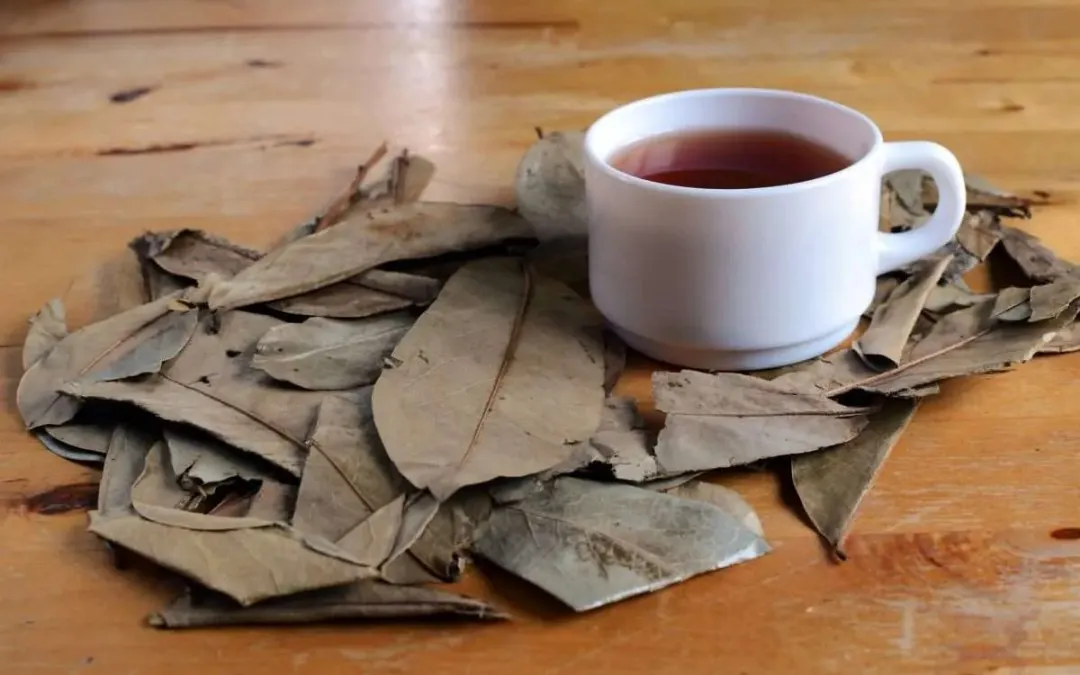
Are Soursop Leaves a Natural Anticancer Solution for Breast Cancer
Why drink Soursop Leaf tea? Breast cancer stands as the second most common cancer among women globally. Its incidence continues to rise year by year, which is giving rise to the demand for more innovative approaches to treatment. Nature-based traditional remedies...

Unlocking the Timeless Wisdom of Frankincense and Myrrh
In this guide, we delve into the art of using Frankincense and Myrrh, exploring their various applications and highlighting the transformative world of aromatherapy and how-to-use-frankincense-and-myrrh for the most benefit.
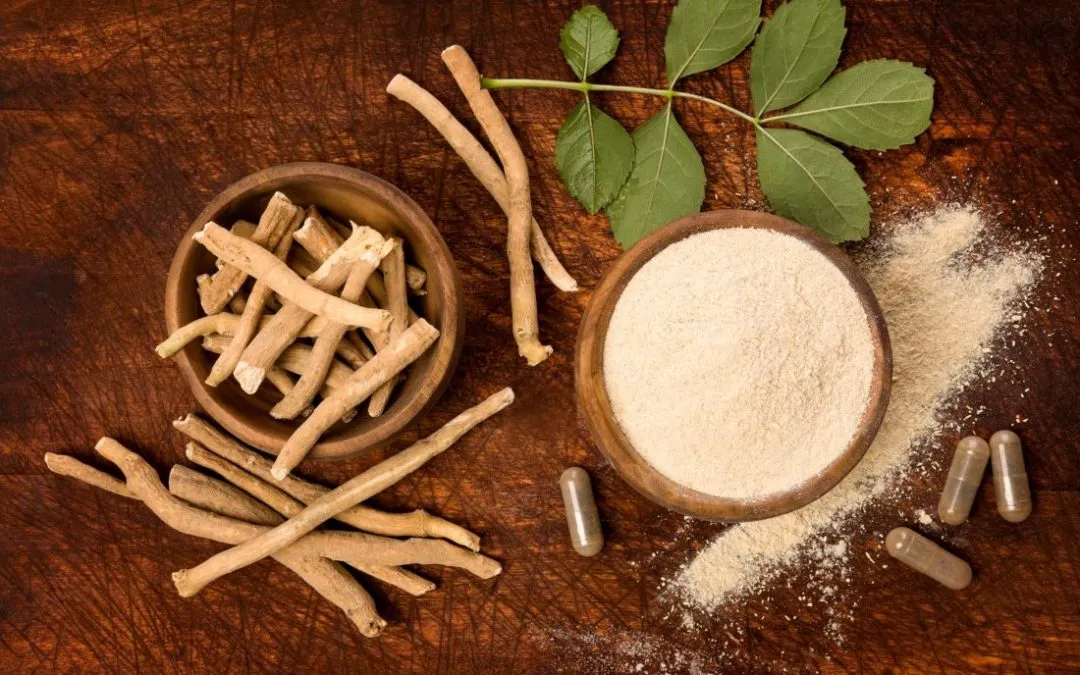
The Power of Ashwagandha: A Natural Approach to Combating Cancer
Ashwagandha, scientifically known as Withania somnifera, is an adaptogenic herb known for its stress-relieving properties. But what does that have to do with cancer? Well, cancer cells are notorious for their ability to multiply rapidly and resist the body’s natural defense mechanisms. One way they do this is by manipulating cellular processes, including the production of ROS and the health of mitochondria, which are the energy powerhouses of our cells.
Stopping Cell Growth
Several factors determine cancer cell growth. Scientists are learning new things every day. Interestingly, diet and lifestyle are very influential factors. The goal is to reduce inflammation. This can be done with a by reducing animal protein, increasing fiber, and adding low-impact exercise to your diet.
Oncogenic signaling is the intricate networks of multiple pathways that interact with each other, and control the growth and progression of a tumor. So, if we understand the earlier statement, nutrition is as important as oncogenic signaling, that tells me nutrition is a critical part of healing process. (No hospital food for me 😊 )
Apoptosis – Another important part of stopping cell growth is apoptosis, or the death of cells. This occurs as a normal and controlled part of an organism’s growth or development. However, cancer cell apoptosis needs to be increased.
Angiogenesis – which helps to prevent tumors from receiving adequate nutrition for growth.
Diet – The most immediate referenced as cancer fighting foods include the following, according to Cancer-Fighting Foods. Some samples include carrots and beans. Eating carrots has been linked in certain studies to a lower risk of stomach, lung cancer, and prostate cancer. But should be avoided for Chronic Lymphocytic Leukemia due to their high vitamin A content. Beans are high in fiber and may be protective against colorectal cancer. One scientist at the Rogel Cancer Center confesses that they learned nutrient signaling pathway is just as important in regulating growth as oncogenic signaling. … Sumeet Solanki, Ph.D.,
The Role of Nutrients
It is my hope that the last few sections help you see the important role nutrients play in stopping malignant cell growth. Nutrition can help to reduce inflammation and alter the molecular landscape of the body. This is accomplished through a variety of methods, such as activating anti-inflammatory pathways or suppressing oncogenes that stimulate cancerous cell division. In addition, certain nutrients may also influence angiogenesis.
Natural Options for Cancer Treatment and Prevention
While pharmaceutical medicine offers some treatment options, they also come with a plethora of side effects too many to mention here. Many of them dangerous in themselves. In addition to killing cancer cells, chemotherapy kills healthy cells. It damages the genes inside the nucleus of cells. Some drugs damage cells at the point of splitting. Some damage the cells while they’re making copies of all their genes before they split. Chemotherapy drugs damage, with a goal of ultimately destroying, rapidly dividing cancer cells in the body. These pharmaceuticals work by targeting the genetic material inside the cell nucleus, altering its structure, and making it unable to replicate. Depending on the type of chemotherapy drug being used, there are different ways in which these drugs can damage a cell. Some cause direct damage to the structures within the nucleus, while others interfere with copying of DNA sequences prior to cell division. However, most normal cells are typically unaffected as they tend to be resting or quiescent – meaning they are not actively replicating their genetic material at that moment.
Natural solutions for cancer prevention and cancer care target slowing or halting the growth of cancer cells. These include natural solutions like aromatherapy, massage, meditation, and dietary applications. If you are uncertain about using natural medicine, check out my blog post on the American Medical Association. Here’s the link below.
In this blog post, we’ll take a close look at the science around dietary options and aromatherapy for stunting cancer growth and providing natural cancer prevention solutions for those with a cancer diagnosis.
Insurance Pharma Doctors and Big money in Medicine
The Role of Nutrients
It is my hope that the last few sections help you see the important role nutrients play in stopping malignant cell growth. Nutrition can help to reduce inflammation and alter the molecular landscape of the body. This is accomplished through a variety of methods, such as activating anti-inflammatory pathways or suppressing oncogenes that stimulate cancerous cell division. In addition, certain nutrients may also influence angiogenesis.

Natural Cancer Prevention and Nature’s Cancer Care
Natural cancer prevention and care offers options for slowing or halting the growth of cancer cells. These include natural solutions using aromatherapy, massage, meditation, and dietary applications. In this blog post, we’ll take a close look at the science around aromatherapy and dietary options for stunting cancer growth and providing natural cancer prevention options for those with a cancer diagnosis.
In fact, one study found that among 65 new drugs registered to treat cancer from 1981 to 2002, 48 of them were derived from natural products. These included vinca alkaloids (vinblastine, vincristine, vindesine, vinorelbine), taxanes (paclitaxel, docetaxel), podophyllotoxin and its derivations (topothecan, irinothecan), and Anthra cyclines (doxorubicin, daunorubicin, epirubicin, idarubicin)7,15 These probably don’t sound familiar to you.
Vinca alkaloids are from the Madagascar periwinkle plant. They are naturally extracted from the pink periwinkle plant. Vinblastine and vincristine are chemicals that can be extracted from Madagascar periwinkle, are approved by the US Food and Drug Administration (FDA) for use in chemotherapy. Other chemicals in Madagascar periwinkle might also have anticancer activity, but they have not been well studied.
Anti-Inflammatories
According to the experts, inflammation provides an optimal environment in the body for cancer cells to grow and thrive. Therefore, adopting a diet that’s rich in anti-inflammatory foods is a potent tool in cancer cell reduction and cancer prevention in general. Incorporating elements such as healthy fats, plant-based foods, and adaptogen-rich herbs can help to reduce inflammation levels. Steer clear of processed and junk foods, sugary items, and unhealthy fats, as they activate inflammation.
The body contains certain substances that can help reduce inflammation, which is when the body’s immune system reacts to something it perceives as a threat. Omega-3 fatty acids are found in fish oil and have been proven to decrease inflammation levels in the body, which can help reduce the risk of certain cancers (Hansen et al., 2005).
Adaptogen-Rich
Certain adaptogenic herbs, such as holy basil, ashwagandha, and ginseng, can help reduce inflammation in the body by regulating cortisol levels (Chen et al., 2019). Cortisol is a hormone released during stress that increases inflammation. These herbs can help reduce cortisol levels and thus decrease inflammation in the body.

Why a Low Animal Protein Diet?
Studies have showed that what kills cancer cells in the body naturally includes a diet low in animal protein. Why? Because cancer cells thrive on high fat proteins, like those in animal fat. This low animal protein diet tends to starve the cells of their high fat protein (animal fat) needs Consumption of by-products made with high heat cooking have been shown to be carcinogenic and contribute to cancer growth. Heterocyclic Amines (HCAs) and Polycylic Aromatic Hydrocarbons (PAHs) are made when creatines and amino acids (both found in meats) and they react together with heat. You may want to note that any animal protein can create these carcinogenic effects if cooked at a high enough heat.
Pharmaceutical Medical Treatment
While pharmaceutical drugs offer some treatment options, they also come with a plethora of side effects too many to mention here. Many of them are dangerous in themselves. In addition to killing cancer cells, chemotherapy kills health cells. It damages the genes inside the nucleus of cells. Some drugs damage cells at the point of splitting. Some damage the cells while they’re making copies of all their genes before they split. Chemotherapy drugs damage all cells indiscriminately, with a goal of ultimately destroying, rapidly dividing cancer cells in the body. These pharmaceuticals are often petroleum (oil) based. They work by targeting the genetic material inside the cell nucleus, altering its structure, and making it unable to replicate. Depending on the type of chemotherapy drug being used, there are different ways in which these drugs can damage a cell. Some cause direct damage to the structures within the nucleus, while others interfere with copying of DNA sequences prior to cell division. However, most normal cells are typically unaffected as they tend to be resting or quiescent – meaning they are not actively replicating their genetic material at that moment.
Foods Rich in Cancer Reduction Qualities
So what are the qualities we are looking for in cancer reducing food, herbs and spices? Earlier I mentioned that we are looking to interrupt the Oncogenic pathways, to increase apoptosis (death) of cancer cells, and stop them from reproducing the cancer cell environment – a body with inflammation. Here are some simple things you can do in addition to those mentioned already. That is a diet low in animal proteins, rich in fiber, and a diet that helps reduce stress. Now let’s talk about some specific superfoods.
Anti-Inflammatory Nutrients
According to the experts, inflammation provides an optimal environment in the body for cancer cells to grow and thrive. Therefore, adopting a diet that’s rich in anti-inflammatory foods is a potent tool in cancer cell reduction and cancer prevention in general. Incorporating elements such as healthy fats, plant-based foods, and adaptogen-rich herbs can help to reduce inflammation levels. Steer clear of processed and junk foods, sugary items, and unhealthy fats, as they activate inflammation.
Certain nutrients have been shown to reduce inflammation levels in the body by targeting inflammatory pathways. Omega-3 fatty acids found in fish oil are known for their anti-inflammatory effects and have been linked with decreased risk of some cancers (Hansen et al., 2005). Other anti-inflammatory compounds include polyphenols like curcumin and resveratrol that are found in specific herbs and spices (Lampe & Peterson, 2011). These molecules can suppress inflammation by blocking proinflammatory mediators such as cytokines or enzymes like cyclooxygenase 2 (COX2) (Reddy et al., 2019). Furthermore, some vitamins such as vitamin C may also modulate inflammatory responses by scavenging reactive oxygen species (ROS) produced during oxidative stress (Fang et al., 2020).
Adaptogen-Rich Herbs
Certain adaptogenic herbs, such as holy basil, ashwagandha, and ginseng, can help reduce inflammation in the body by regulating cortisol levels (Chen et al., 2019). Cortisol is a hormone released during stress that increases inflammation. These herbs can help reduce cortisol levels and thus decrease inflammation in the body.
Raw Honey has been used for centuries as a natural remedy for a variety of ailments, including cancer. It contains powerful antioxidants, phytochemicals and other bioactive substances with express anti-cancer properties. Honey has been found to inhibit the growth of certain cancer cells and to reduce inflammation associated with tumors. Studies have also suggested that honey may help to protect against DNA damage, which can lead to the development of some cancers.
The multiple components of honey interact synergistically to promote its health benefits, making it an effective complementary and alternative medicine for treating a variety of conditions, including cancer. It is safe and non-toxic, making it an ideal choice for those seeking natural therapies rather than conventional treatments. In addition, honey has broad application potential in apitherapy due to its superior efficacy.
Honey’s unique combination of biological, physical and chemical properties provide it with an array of therapeutic effects. Thus, the mechanistic insights into the overall protective effects of honey indicate that there is a unique ‘synergistic multiple ingredients factor’ which makes this natural remedy so effective in treating cancer. Research continues to explore its potential as a complementary or alternative therapy for various diseases, including cancer.
Red Onions – I like to add a little red onion to the mix because it contains Quercetin. Foods that are packed with antioxidants can help fight those harmful free radicals that cause other illnesses like cancer. Quercetin helps “cleans up” free radicals by pairing with their single electrons so they can no longer cause damage. Onions have anticariogenic properties and antibiotic effects.
Red onions are special because they have quercetin in them. Quercetin can help fight off cancer by getting rid of free radicals. Free radicals can hurt your body and make you sick, but quercetin stops them from doing that.
Chia Seeds are one of the best anti-inflammatories. They contain antioxidants and polyphenols are protected beta cells of the pancreas from inflammation. These components are protected from the cell damage of the different body parts, which can provide help in different types of cancer including breast, colorectal, liver, and pancreatic.
Reducing inflammation is an essential part of cancer prevention and management. To do this, one should consume a healthy diet that includes anti-inflammatory proteins such as omega-3 fatty acids, polyphenols found in herbs and spices, vitamins like vitamin C, and adaptogenic herbs such as holy basil or ashwagandha. Avoiding processed and junk foods, sugary items, and unhealthy fats are also important to activate inflammatory pathways. With these dietary changes combined with regular exercise and stress relief methods, individuals can effectively reduce their risk for developing cancer or progression of existing tumors.
Related products

Junk Foods are Like Eating Poison – better to starve.
In fact, some claim intermittent fasting can have a significant impact on cancer cell reduction because of the cell’s feeding needs. This involves calorie restriction, which science has shown increases neurogenesis (citation).
Back to junk foods. If you check out the layout of the grocery stores, you’ll see the standard layout is fresh foods around the edges and dried processed foods in the center. Eating processed foods from the center of the grocery store isles is like putting poison in your body. If you think I am kidding, look at the labels. If you aren’t eating organic, you are putting chemicals that block your natural hormone system from working. When your body’s limbic system is blocked your body cannot regulate the hormones in your system. The US FDA allows levels that are far higher in this country than in most other major democracies. Keep this in mind while shopping. Changing your eating habits may be one of the most difficult things you do. But, it is critical to your health that you do make changes.
Vitamin D3
Vitamin D is essential for overall health and plays a role in cancer prevention. When Vitamin D3 binds with certain cells in the body, it can slow or even stop the growth of cancer. Although the body can produce Vitamin D3, it’s usually done through exposure to natural sunlight, which may not always be accessible. Alternative natural sources for Vitamin D3 include food, supplementation, and spending time in tanning beds under the supervision of health professionals.
Mindset Change
While many people believe that treatment for cancer should solely focus on the physical aspect, your mental strength is just as important. The way you direct your thoughts can alter the outcome of your diagnosis. Science has demonstrated that attitude does matter. Research has proven that maintaining an optimistic mindset strengthens the immune system and enhances the efficacy of cancer treatment. Mindfulness meditation, gratitude practices, and therapy are some ways to cultivate a positive mindset.
Stay active – Walking, Yoga, Running
Chemotherapy will kill all cells, including new healthy cells. It will take time and some people get depressed. One of the reasons depression comes in has to do with the fact that the hippocampus is not generating new brain cells. There are a few factors that contribute to brain health including the exercise you get, the air you breath, water and the food you eat. All of these play a role in your recovery and reducing depression.
Exercise is another natural cancer prevention option that’s overlooked but highly effective. Regular physical activity has been linked to a reduced risk of developing cancer and boosting immune function. Even light exercise routines can make a significant difference when done consistently over time. Ensure incorporating cardiovascular exercise, resistance training, and stretching into your routine.

Are Soursop Leaves a Natural Anticancer Solution for Breast Cancer
Why drink Soursop Leaf tea? Breast cancer stands as the second most common cancer among women globally. Its incidence continues to rise year by year, which is giving rise to the demand for more innovative approaches to treatment. Nature-based traditional remedies...

Unlocking the Timeless Wisdom of Frankincense and Myrrh
In this guide, we delve into the art of using Frankincense and Myrrh, exploring their various applications and highlighting the transformative world of aromatherapy and how-to-use-frankincense-and-myrrh for the most benefit.

The Power of Ashwagandha: A Natural Approach to Combating Cancer
Ashwagandha, scientifically known as Withania somnifera, is an adaptogenic herb known for its stress-relieving properties. But what does that have to do with cancer? Well, cancer cells are notorious for their ability to multiply rapidly and resist the body’s natural defense mechanisms. One way they do this is by manipulating cellular processes, including the production of ROS and the health of mitochondria, which are the energy powerhouses of our cells.
Lastly, what you consume will determine how well you reduce cell growth.
Aromatherapy and Essential Oils
Essential oils have been used for centuries to promote wellness and natural alternative cancer prevention. Some essential oils that can be used in aromatheraphy with cancer patients are frankincense, lemongrass, peppermint, and eucalyptus. Frankincense has compounds that can reduce inflammation and inhibit tumor growth while lemongrass works as an effective anti-oxidant and prevents cancer cells from multiplying. Peppermint oil helps to improve fatigue associated with chemotherapy while eucalyptus has anti-tumor properties that can help relieve pain in affected areas.
Lavender and peppermint can also ease the side effects of chemotherapy and radiation therapy when used in aromatherapy and massage. Lavender is one of the most popular essential oils used with cancer patients to ease the many unpleasant side effects of treatments such as chemotherapy and radiation therapy. It is known to help reduce stress, anxiety, depression, and insomnia. All of which can be caused by the physical and emotional toll of cancer treatments. A randomized clinical trial comparing Lavender Oil Aromatherapy with the drug Lorazepam for them equally effective. However, the essential oil had far fewer side effects. The sweet floral scent of lavender is know to have an effect on the nervous system, which helps promote restful sleep. Additionally, topical application of lavender oil can soothe inflammation and discomfort in the skin caused by radiation therapy.
All treatments should be used with caution, some people may be sensitive or allergic to certain types of plants. It is important to consult an aromatherapy specialist or herbalist familiar with essential oils before using them for therapeutic purposes.
Conclusion
Pharmaceutical medicine is often a first line of defense against cancer. However, natural cancer prevention methods and stunting cancer growth are just as important. Mindset change, anti-inflammatory foods, Vitamin D3, exercise, and essential oils are just a few natural methods for preventing and stunting the growth of cancer cells. While these methods may not cure cancer on their own, incorporating these into your healthcare routine can mean a more holistic approach to getting to cancer remission. Remember, early detection and proper treatment are also crucial factors in the battle against cancer.
Sources
Cooper GM. The Cell: A Molecular Approach. 2nd edition. Sunderland (MA): Sinauer Associates; 2000. The Development and Causes of Cancer. Available from: https://www.ncbi.nlm.nih.gov/books/NBK9963/
Chen J., Wang B., & Zhou R. (2019). Adaptogenic Herbs for the Treatment of Stress-related Disorders. Evidence-Based Complementary and Alternative Medicine, 1-13.
Fang S., Zhang Y., Yang L., Zou D., & Liu X. (2020). Vitamin C: A Promising Molecule in Cancer Prevention and Therapy. International Journal of Molecular Sciences, 21(15), 5304.
Hansen JE, Bøhn SK, Norheim AJ & Fønnebø V. (2005). Effects of n-3 polyunsaturated fatty acids on cancer risk: a systematic review and meta-analysis. The American Journal of Clinical Nutrition, 82(1), 83–91.
Lampe JW & Peterson S. (2011). Health effects of vegetables and fruit: assessing mechanisms of action in human experimental studies. American Journal of Clinical Nutrition, 93(5), 1077–1092.
Reddy KK, Kizhakkeveettil A., Dennis EA, et al.(2019). Role of Dietary Polyphenols on Inflammation and Cancer: Mechanistic Insights from Preclinical Studies. Nutrients 11(12): 2832.
Safarzadeh E, Sandoghchian Shotorbani S, Baradaran B. Herbal medicine as inducers of apoptosis in cancer treatment. Adv Pharm Bull. 2014 Oct;4(Suppl 1):421-7. doi: 10.5681/apb.2014.062. Epub 2014 Aug 25. PMID: 25364657; PMCID: PMC4213780.
;https://www.ncbi.nlm.nih.gov/pmc/articles/PMC6955751/; https://pubmed.ncbi.nlm.nih.gov/30245611/?from_term=omega-3+fatty+acids&from_pos=2; https://pubmed.ncbi.nlm.nih.gov/18447633/?from_term=omega-3+fatty+acids&from_pos=1;
https://pubmed.ncbi.nlm.nih.gov/27598722/?from_term=curcumin&from_pos=2 ; https://pubmed.ncbi.nlm.nih.gov/25735862/?from_term=resveratrol&from_pos=4 ;
Hüttemann, M., & Flögel, U. (2008). Free radicals and cancer: cause or consequence?. Cellular and Molecular Life Sciences, 65(14), 2177-2189.
Khalid W, Arshad MS, Aziz A, Rahim MA, Qaisrani TB, Afzal F, Ali A, Ranjha MMAN, Khalid MZ, Anjum FM. Chia seeds (Salvia hispanica L.): A therapeutic weapon in metabolic disorders. Food Sci Nutr. 2022 Dec 15;11(1):3-16. doi: 10.1002/fsn3.3035. PMID: 36655089; PMCID: PMC9834868.
Kowalczuk, Z., & Kaczmarek, L. (2010). The role of free radicals in oncogenesis. Folia Histochemica et Cytobiologica, 48(4), 393-406.
Dietary change starves cancer cells, overcoming treatment resistance
Laboratory research finds a low protein diet can enhance standard treatment for colon cancer. Blog post at the Michigan Medical at the University of Michigan posted November 18, 2022 by Nicole Fawcett
Wellness Wholeness and Essential Oils
The Mystic Yogi, helping you connect the dots.

